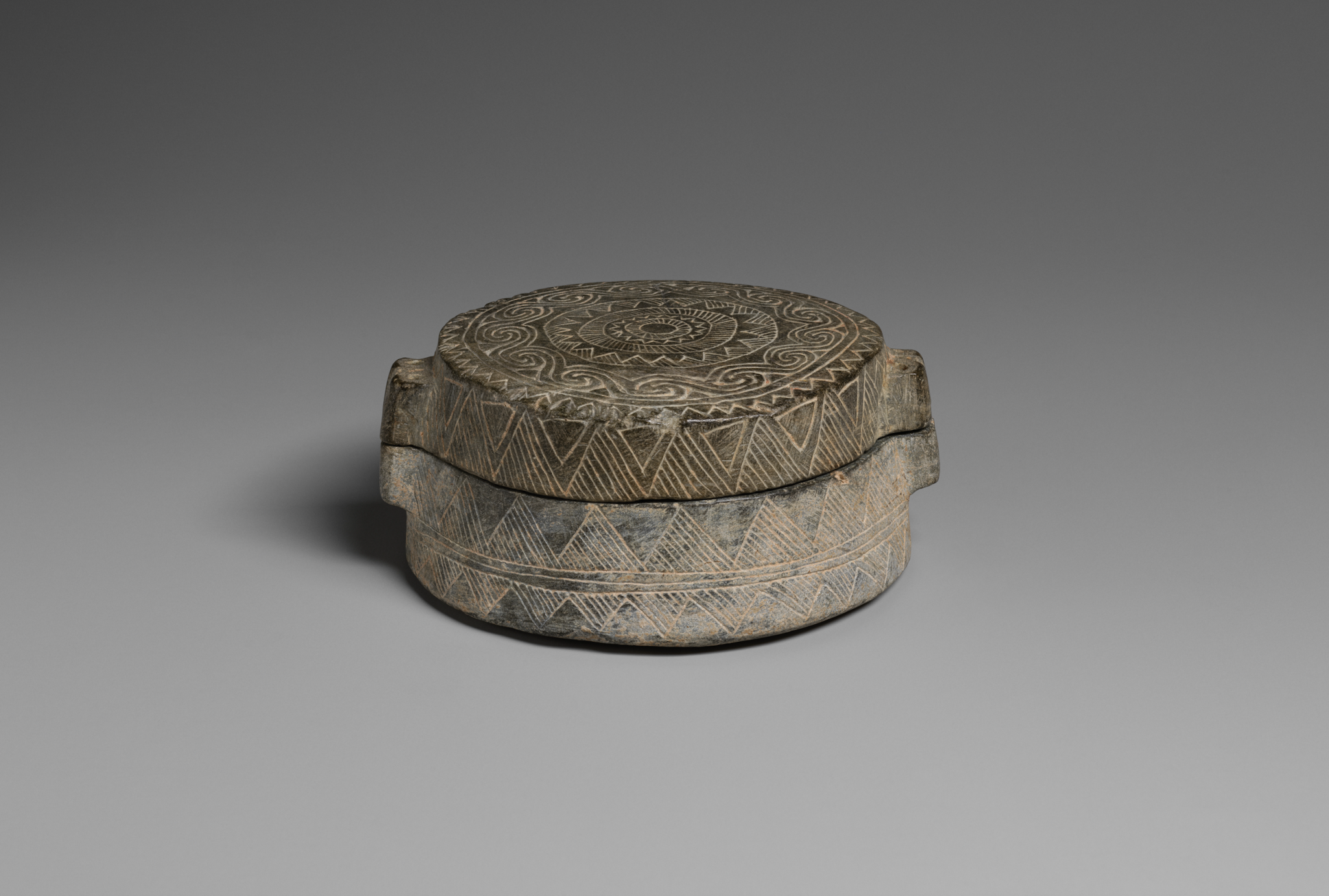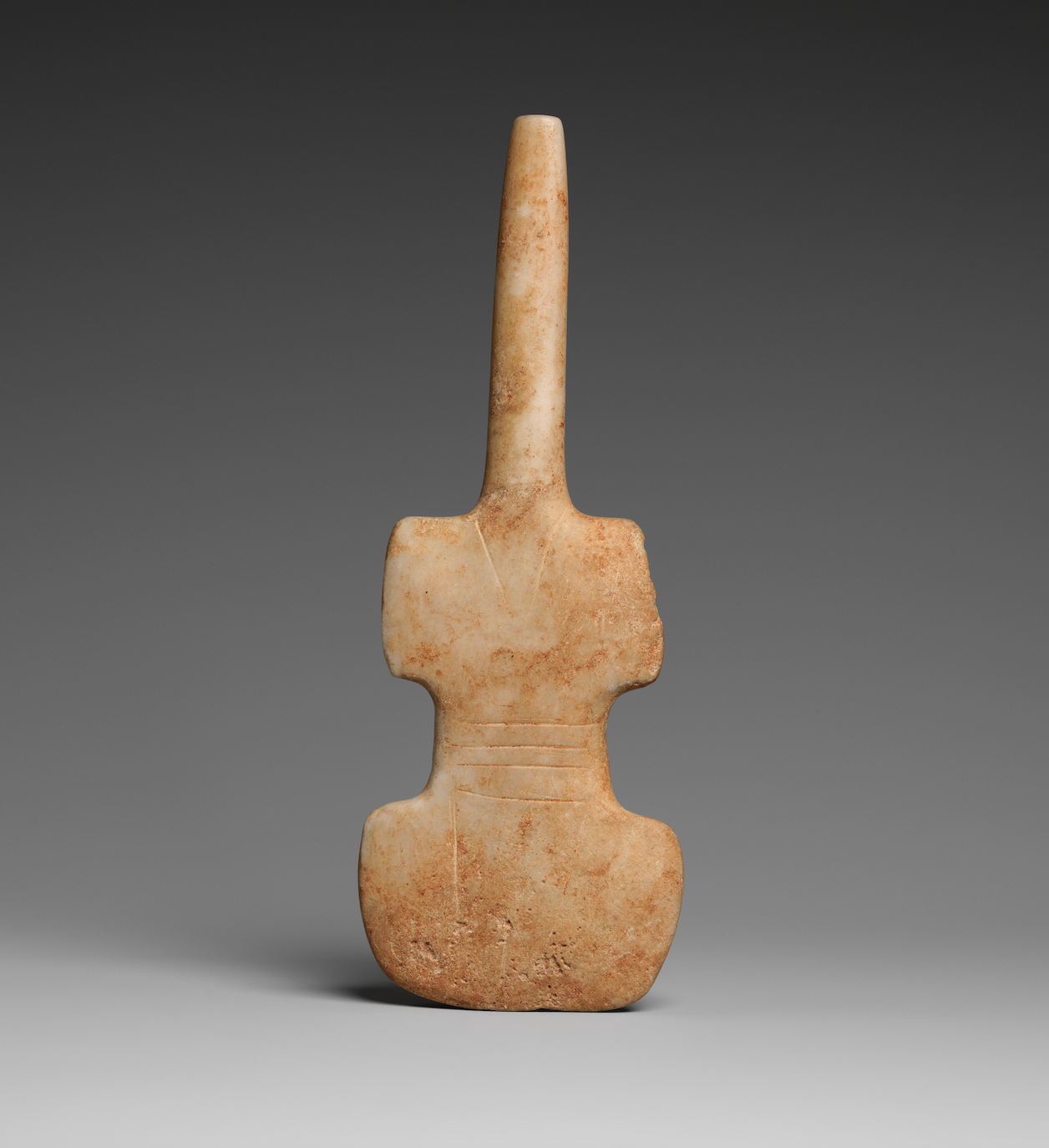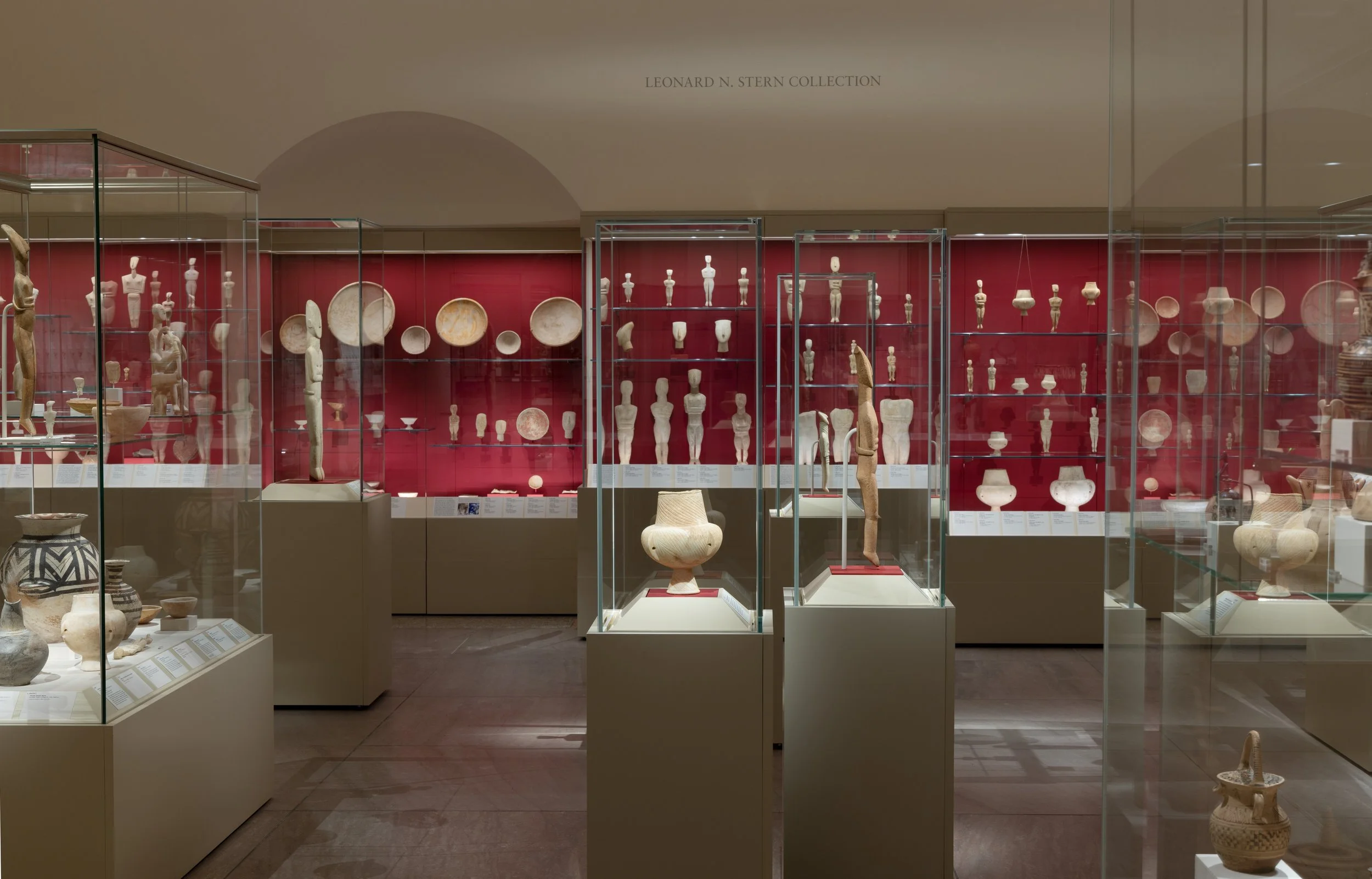Cycladic ca. 2500–2400/2300 BCE Marble
Leonard N. Stern Collection, Loan from the Hellenic Republic, Ministry of Culture Image: © The Metropolitan Museum of Art, photo by Bruce Schwarz
THE MET FEATURES NEW INSTALLATION OF EXTRAORDINARY CYCLADIC ART FROM THE LEONARD N. STERN COLLECTION ON LOAN FROM THE HELLENIC REPUBLIC
The Metropolitan Museum of Art is currently presenting an extraordinary exhibition of Cycladic art, featuring 161 remarkable works from the Early Bronze Age (3200 to 2000 BCE). These exceptional pieces, from the Leonard N. Stern Collection, have been generously loaned by the Hellenic Republic.
BY EGW LUXURY MAGAZINE Fall /Winter 2024
The exhibition, which marks the result of a historic 50-year partnership between The Met, the Ministry of Culture of the Hellenic Republic, and the Museum of Cycladic Art in Athens, offers an unparalleled opportunity to explore the artistic heritage of the Cyclades.
Cycladic Art: Origins and Significance
The inhabitants of the Cyclades began producing stone sculpture and vessels as early as the fifth millennium BCE. By the Early Cycladic period, artisans used the region’s abundant marble to carve distinctive human figures and vessels with tools made from volcanic glass and abrasives like emery and pumice. Though now admired for their abstract simplicity, many of these figures were once brightly painted, as revealed by traces of color preserved on some sculptures.
Scholars believe these sculptures, primarily female and nude, may be linked to fertility and the life cycle, central themes in ancient Mediterranean cultures. Most figures were discovered in graves, but some were also found in settlements and sanctuaries. While the exact purpose of these objects remains elusive due to the absence of written records, their craftsmanship and cultural significance endure.
About Leonard N. Stern
Leonard N. Stern, a prominent businessman and philanthropist, has passionately collected Cycladic art for over 40 years, amassing one of the most comprehensive private collections of Cycladic art outside Greece. Stern’s dedication to sharing this cultural heritage has culminated in the long-term loan of his collection to The Met, making these masterpieces accessible to a global audience.
The collection includes nearly all major types of Cycladic marble figurines, spanning the Late Neolithic to the Early Bronze Age. A selection of 15 works from the collection was first exhibited at the Museum of Cycladic Art in Athens in 2022 before the entire collection moved to New York for this 25-year loan period.
A Landmark Collaboration
This exhibition is the result of a historic 50-year partnership between The Met, the Ministry of Culture of the Hellenic Republic, and the Museum of Cycladic Art in Athens. Ratified by the Greek Parliament in 2022, the agreement allows for a 25-year display at The Met, after which select works will return to Greece while new loans from Greek museums will enrich the exhibition. Following this period, The Met will continue to showcase significant Cycladic art on loan from Greek museums for an additional 25 years.
Max Hollein, The Met’s Director and CEO, expressed the importance of this collaboration: “We are thrilled to present this exceptional display of Cycladic art, thanks to the significant partnership with Greece and the Museum of Cycladic Art. This presentation not only showcases the extraordinary artistic achievements of this ancient culture but also ensures the study and appreciation of Cycladic art for generations to come.”
Kassandra Marinopoulou, President and CEO of the Museum of Cycladic Art, echoed this sentiment: “After last year's presentation in Athens, I am delighted that the full Stern Collection is now available to The Met's global audience. This collaboration furthers our mission to promote Cycladic culture and ancient Greek heritage internationally.”
Exhibition Highlights
The Leonard N. Stern Collection includes some of the most iconic Cycladic marble figurines, spanning different periods and styles. Notable examples include violin-shaped and Plastiras figurines, as well as rarer pieces like a "Double figure" of the Early Spedos variation. Among the collection's most significant works is a monumental reclining female figure over four feet long—one of the few surviving large-scale Early Cycladic statues.
In addition to marble sculptures, the collection also features a variety of marble vessels, terracotta artifacts, silver bracelets, and copper tools. These objects offer a comprehensive glimpse into both Cycladic art and everyday life during the Early Bronze Age.
Continuing Legacy
In addition to loaning his collection, Leonard N. Stern has made a major gift to The Met, endowing resources to support the ongoing study of Cycladic art. His contributions ensure that this ancient civilization’s legacy will continue to be explored, studied, and celebrated.
The display is located at The Met Fifth Avenue, in the Robert and Renée Belfer Court, Galleries 150–151. An exhibition catalogue titled *Cycladic Art: The Leonard N. Stern Collection on Loan from
To view more about the exhibit, you can visit The Met's official website or follow them on Instagram @metmuseum for updates and highlights.

Marble double female figure Cycladic ca. 2700–2500 BCE Marble Leonard N. Stern Collection, Loan from the Hellenic Republic, Ministry of Culture Image: © The Metropolitan Museum of Art, photo by Bruce Schwarz

Marble head of a figure Cycladic ca. 2700–2500 BCE Marble Leonard N. Stern Collection, Loan from the Hellenic Republic, Ministry of Culture Image: © The Metropolitan Museum of Art, photo by Bruce Schwarz

Marble female figure Cycladic ca. 3200–2700 BCE Marble Leonard N. Stern Collection, Loan from the Hellenic Republic, Ministry of Culture Image: © The Metro

Marble female figure Cycladic ca. 2400/2300-2200 BCE Marble Leonard N. Stern Collection, Loan from the Hellenic Republic, Ministry of Culture Image: © The Metropolitan Museum of Art, photo by Bruce Schwarz

Marble footed cup with spout Cycladic ca. 2700–2400/2300 BCE Marble Leonard N. Stern Collection, Loan from the Hellenic Republic, Ministry of Culture Image: © The Metropolitan Museum of Art, photo by Bruce Schwarz

Marble vase with lug handles Cycladic ca. 3200–2700 BCE Marble Leonard N. Stern Collection, Loan from the Hellenic Republic, Ministry of Culture Image: © The Metropolitan Museum of Art, photo by Bruce Schwarz

Marble female figure Cycladic ca. 2700–2400/2300 BCE Marble Leonard N. Stern Collection, Loan from the Hellenic Republic, Ministry of Culture Image © The Metropolitan Museum of Art, photo by Bruce Schwarz

Marble vase with high foot and lug Cycladic ca. 3200–2700 BCE Marble Leonard N. Stern Collection, Loan from the Hellenic Republic, Ministry of Culture Image: © The Metropolitan Museum of Art, photo by Bruce Schwarz

Steatite pyxis (box) Greek ca. 2700–2400/2300 BCE Steatite Leonard N. Stern Collection, Loan from the Hellenic Republic, Ministry of Culture Image: © The Metropolitan Museum of Art, photo by Bruce Schwarz

Marble female figure Cycladic ca. 3200–2700 BCE Marble Leonard N. Stern Collection, Loan from the Hellenic Republic, Ministry of Culture Image: © The Metropolitan Museum of Art, photo by Bruce Schwarz

Terracotta frying pan Cycladic ca. 2700–2400/2300 BCE Terracotta Leonard N. Stern Collection, Loan from the Hellenic Republic, Ministry of Culture Image: © The Metropolitan Museum of Art, photo by Bruce Schwarz
















